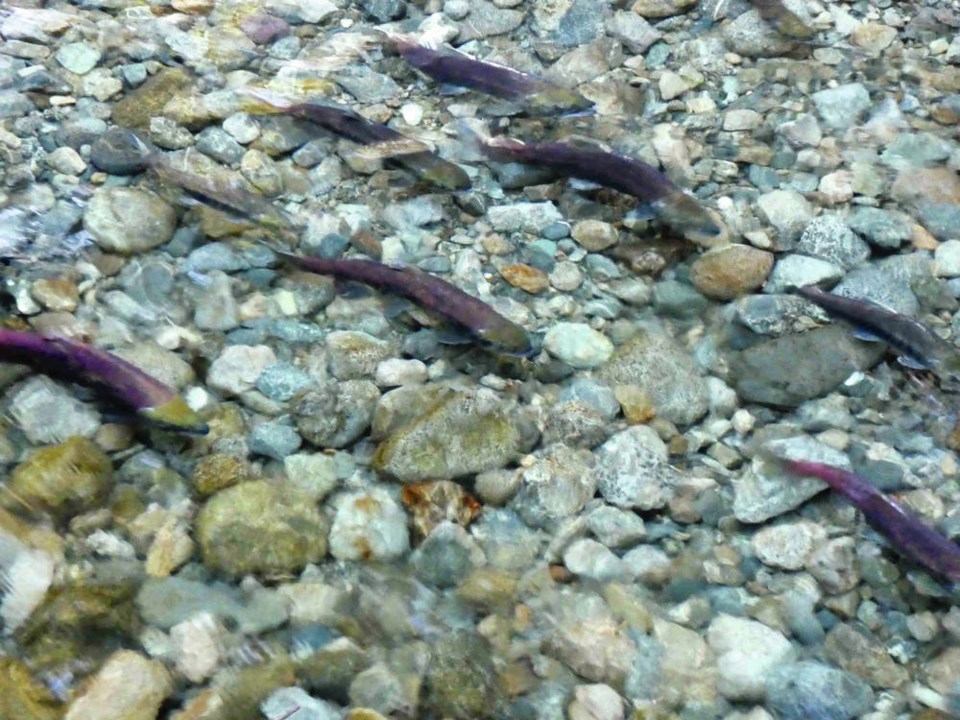Conservationists and whale-watchers are urging the province to reject a fish farm company’s bid to use a pesticide against sea lice because they fear it will harm grey whales feeding in Clayoquot Sound.
The application from Cermaq sa���ʴ�ý Ltd. comes as higher than usual numbers of grey whales have been found dead along the west coast of North America in the past few years. Bodies of about 430 have washed up onto shores since 2019.
Grey whales travel from waters off Mexico, where they calve, head north to the Bering and Chukchi seas off Alaska. One group stops off the west coast of Vancouver Island every year to feed.
John Forde of the Whale Centre Tofino has been offering whale-watching trips for close to 40 years, and said the product used by fish farms kills more than sea lice on farmed salmon. It kills small crustaceans, such as crab larvae, which whales rely on in their diet.
“There’s got to be different solutions,” he said Monday.
He’s concerned for the whales and for the whale-watching sector if these huge animals, which can reach 12.5 metre long and weigh up to 35 tonnes, are affected.
Bonny Glambeck, campaign director for Clayoquot Action, a conservation organization in Tofino, said marine crustaceans are a critical part of the food chain.
Biologists are trying to figure out why the grey whales are dying, she said. “They do appear to be starving.”
When the grey whales arrive in the Clayoquot area, they will be feeding for the first time since leaving Mexico. “They haven’t eaten all winter, so it is very important when they get here that there’s food for them,” Glambeck said.
The area is part of the Clayoquot Sound biosphere reserve, declared by the United Nations Educational, Scientific and Cultural Organization.
“We just feel it is really, really wrong to be dumping pesticides into a special marine ecosystem such as this one,” Glambeck said.
New research out of Norway has found that hydrogen peroxide is more toxic than was believed three years ago, she said.
Cermaq, owned by Mitsubishi, operates in the Clayoquot area, where it raises Atlantic salmon in pens. It has applied for a three-year pesticide-use permit, to run to spring 2024, to use up to 903,240 litres of Paramove 50, containing hydrogen peroxide, against sea lice.
Fish farms pump the salmon into larges vessels called wellboats, where they are held in a concentration of the pesticide for 30 minutes and then additional sea water is brought in, the company said in its application. Fish are then pumped back into the net cage. The liquid is filtered for sea lice and eggs and is discharged.
sa���ʴ�ý’s Environment Ministry received Cermaq’s application in January. The ministry told Cermaq in February that it was to advertise its application within 45 days and then inform the province of how it will respond to any public and First Nations comments within 90 days, a provincial official said in a statement.
Sea lice have been a concern to environmentalists for decades. They say the parasites transfer from farmed fish pens onto wild salmon stocks, weakening them and making them more vulnerable to disease and death.
A statement from the sa���ʴ�ý Salmon Farmers Association said: “We constantly monitor sea lice levels, and when we find numbers are increasing, we have several tools in place to bring numbers back down.
“Depending on the situation we might use a freshwater or Paramove 50 treatment within a wellboat, jets of pressured sea water in a hydrolicer, or medicated feed, for example.”
When hydrogen peroxide treatments take place, it typically occurs in the hold of a wellboat, the association said.
“Hydrogen peroxide rapidly breaks down in the marine environment into hydrogen and oxygen. This treatment is safe, and has been extensively studied with findings that there is no impact on marine mammals at these low levels,” the association said.
“Our responsibility is to keep the levels of sea lice on farms low, so they don’t transfer back to wild fish.”
